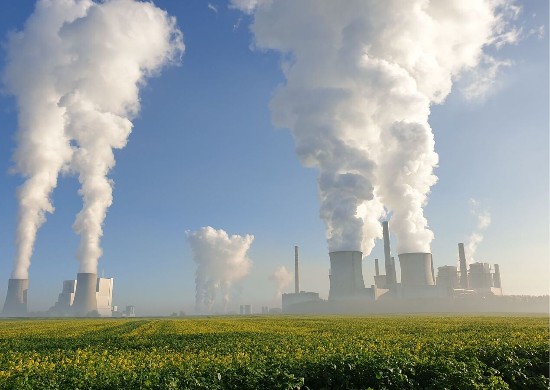
What is the timing between carbon dioxide (CO2) or methane (CH4) emissions and their maximum atmospheric temperature impact? It turns out that is not an easy question to answer because there are many variables to consider.
One recent study pegged that a maximum warming response from an emission source takes between 6.6 and 30.7 years.
If true, it means the consequences of emitting CO2 or CH4 can be measured in the short term, and fully felt in terms of atmospheric warming within the generation responsible for it. This means that tracing greenhouse gas (GHG) emissions to an emitter should be possible for legal purposes. It also means that the emissions window is very short in terms of doing measurable climate change damage. Finally, for those seeking climate change mitigation, it means global warming counter strategies can be implemented much faster and achieve near-immediate results.
A case example is worth considering. When a coal-burning thermal power plant emits CO2 and other GHGs, the local increase in atmospheric levels is abrupt. Then the GHGs get diffused with carbon gasses getting absorbed by local forests, soil, the nearby ocean and any other natural carbon sinks within the vicinity. That means the immediate spike in GHGs slowly declines. The warming caused by the increased GHGs and their radiative forcing is, as a result, delayed. But natural carbon sinks can only absorb carbon emissions for so long. Even the ocean, the largest carbon sink on the planet, has its limits.
Another factor to consider is the size of the GHG emission pulse coming from that plant or factory. The larger the amount of GHGs, the slower the uptake by natural carbon sinks. That means the bigger the GHG radiative forcing on the atmosphere which, of course, knows no boundaries. That means the GHG radiative contribution gets distributed across the globe, further complicating the ability to measure single sources of these emissions and their cumulative impact over time.
One thing, however, is certain. When a power plant, factory, oil refinery, or other polluting source adds GHGs to the atmosphere, the warming effect can be quick, something not fully described in the literature looking at anthropogenic causes for global warming.
One study I looked at calculated that 93% of peak warming from a new emission source can be realized in 10 years. Does that mean an immediate GHG emissions reduction can determine within a very small time window, the future level of atmospheric warming? If so, then the emission reductions we do today can immediately benefit the planet in decades, not centuries.
Can Carbon Capture Fast Track Global Warming Mitigation?
If we were to implement carbon capture technology to the maximum, could we reverse global warming? According to a study done by Wood Mackenzie, to stop temperatures from rising beyond 1.5 Celsius (2.7 Fahrenheit) we would need to capture 7 billion tons of CO2 and other GHGs per year going forward. But current and planned carbon capture technology, if everything gets built, doesn’t come close to that number. The planned global carbon capture capacity on the books amounts to 1.4 billion tons sequestered annually, a far cry from 7 billion, and likely to see global atmospheric temperatures 2.5 Celsius (4.5 Fahrenheit) higher than today by 2050.
At the upcoming COP28, in the United Arab Emirates, the United Nations annual gathering will include a great deal of discussion by fossil fuel companies about their commitment to implementing carbon removal technologies. Their credibility should be questioned considering the number of carbon capture projects partially funded by local government partners that these companies have abandoned in the past.
In Canada, the Pathways Alliance represents a partnership of major oil sands producers who express a commitment to reach net-zero GHG emissions from operations through carbon capture and storage. The Pathways fact sheets describe capturing CO2 from more than 20 oil sands facilities and transporting it over a 400-kilometre (almost 250-mile) pipeline to deposit it in a geologically stable underground formation where it will be permanently sequestered.
How much have the partners spent on the project so far? As of March of this year, about $10 million. How much do they estimate the project will cost? $16.5 billion which is not small change. So how much are the partners committed to putting their money into the project? It looks like about $7.6 billion or 46% of the total cost. Where is the rest of the money to come from? Government. If true to form as we have seen in many past carbon capture projects, will the partners bail as the costs mount well beyond project estimates? My guess is highly likely.
And should the Pathways Alliance complete the project, how many tons of GHGs will be removed annually? Around 12 million tons in total. Compare that to the 70 million tons the current oil sands projects produce annually and it amounts to a mere 17.1% of the total.








